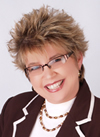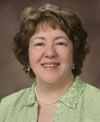Best Business Practices for Sleep
Strategies and tactics providers of sleep equipment can employ to increase their business and fend off funding threats.
- By Joseph Duffy
- Jun 01, 2011
Sleep is big business for providers and critical for a patient’s quality of life. According to sleep equipment and services provider Sleep Management Solutions, the sleep industry continues to grow at roughly 20 percent per year for both diagnosis and therapy. But even with growth in the sleep industry, cuts, caps and competitive bidding can become roadblocks to success. Therefore, it is critical to understand best practices, not only for business survival, but most importantly to effectively aid in the treatment of a growing number of sleep-deprived patients.
RSM spoke to experts in the sleep industry to compile best practices that can help providers navigate through a changing industry. Although the sleep industry is in constant flux with its myriad product mix and industrychanging research, here is what our experts thought sleep industry providers should consider today.
Offer a Comprehensive Sleep Management Program
From Darlene Weeks, vice president clinical services and sales, Care Medical The common mantra in our industry today is that with all the reimbursement cuts and especially with national competitive bidding, customer service is nearly a thing of the past. While we are definitely being challenged to think outside the box and be creative, we must continue to provide excellent customer service. Since our reimbursement is fixed, we must find a way to provide the service at a lower cost and capitalize on our reimbursement opportunities.
In an era of reimbursement cuts, extensive documentation requirements and competitive bidding, a DME provider no longer has the option of whether to provide a well-structured resupply program. To not do so is to run a nonprofit sleep program. For most providers, that is not the goal. The initial setup is marginally profitable at best. Some providers reading this might say: We are making a nice profit and we do not have a structured resupply program.
At the surface it may appear that way. Let’s look a little deeper at the real cost of providing that PAP unit, when the average of cost of goods sold is 40 percent and the average cost of insurance verification and billing is 10 percent. In many states we are required to use a licensed respiratory therapist to provide the initial training for the unit and the mask fitting. Even before we pay our respiratory therapist or we add in the facility costs, we are looking at 50 percent of our ‘margins’ not being margins at all. So, if the average difference in cost of goods sold and expected reimbursement is $1,000 for the device and the supplies, it brings our net profits down to well under $500 or less than a 50 percent margin. With national competitive bidding rates coming in at about a 33 percent decrease in reimbursement, it leaves us with approximately 14 percent to 15 percent margin. How quickly we go from a ‘healthy margin’ to not covering expenses.
There is an opportunity with resupply to continue generating profit for many years to come. The paperwork and documentation requirement is much less and for the patient to remain compliant with therapy, they will need additional supplies for as long as they are prescribed PAP therapy. (This is usually for the remainder of the patient’s lifetime.) An average resupply patient should generate approximately $1,080/year under the competitive bidding program. In five years, that is $5,400! And this revenue is generated from the existing patient base. The hard work was done in months one through three. It is after that the opportunity exists to provide superior clinical care by providing replacement supplies and to capitalize on the reimbursement.
Another business strategy to optimize profits and increase service to the end user at the same time is to use a logistics company (such as PPM) to store, pick, pack and ship the product to the patient. That eliminates need for additional warehouse space or an additional FTE to manage the logistics. Many manufacturers of PAP supplies stock inventory on consignment at PPM for providers. That is a huge benefit to the provider. The consignment benefit reduces required in-house inventory and allows access to most masks and supplies from many of the manufacturers at all times.
The importance of education cannot be overstated. The patient must be an equal participant in the relationship. It is critical that the patient understands the importance of being compliant with the therapy and consequences of not being compliant. It is a bad business model to have patients noncompliant and returning their PAP devices, both from a clinical and a financial standpoint. Spending an extra five minutes during the initial instruction to educate the patient on the side effects of untreated OSA can pay dividends in the end.
Phone follow-up should begin within the first 48 hours. If by 72 hours patients are not making progress with being able to wear their unit, it is time to bring them back into the office and review the training and evaluate what specific problems they are having. The first download should be between two and four weeks after initiation of therapy. If the patient is making good progress at this time, the second download can be scheduled for four weeks, which will be six to eight weeks after initiation of therapy. If there are continued problems with compliance on the first download, more aggressive monitoring will be required. The primary objective is to identify and correct to meeting the 70 percent compliance threshold early. Once the patient is frustrated and decides not to adhere to prescribed therapy, it is very difficult to change that attitude.
Humidification is often overlooked. Many times the missing piece of the compliance puzzle is proper humidification. With optimized humidification, patients can often acclimate to higher pressures and compliance increases significantly. Heated wire tubing has greatly increased our ability to provide optimal humidification even with higher pressures. Many of the commonly heard complaints from patients are a dry nose and throat or a congested nose. Both symptoms are usually overcome with increased humidification. Sometimes the patient cannot identify what the problem is other than ‘it is just too much pressure.’ Proper humidification will decrease the airway resistance and thereby make the pressure feel more manageable. The patient’s perception of high pressure becomes your reality.
The task before us is formidable: To provide excellence in customer service while maximizing reimbursement opportunities while at the same time reducing the cost of providing that service. Increased service and decreased reimbursement are not usually compatible with one another, but they are not necessarily mutually exclusive.
Ensure a Successful PAP Program
 From Kelly J. Riley, CRT, RCP, director, National Respiratory Network
From Kelly J. Riley, CRT, RCP, director, National Respiratory Network
Seek to really understand what you and your team are going to memorialize as your definition of patient compliance. Often if we ask three different staff members what they consider as the definition for compliant, there will be three different answers. Then whatever is decided, whether it is four hours per night, six hours per night, make sure you share that with all patients. This shows them they are part of something much bigger than just their own therapy, that their data gets added to the overall company data and ‘surely they would not be the one to bring the score down.’
Repeated and consistent follow-up during the first 30 days is critical. That means ‘during’ the first 30 days, not at or after 30 days. There is substantial research that shows the level of use at 30 days is a predictor of long-term use. Too often we are looking at 120 days as the end date for measuring success, when in reality, it should be one year. There is a huge amount of research that shows only 50 percent of patients are compliant at one year, which is contributory to why payers look so closely at this area. They simply do not want to pay for something that is not being used.
Educate, educate, and then educate some more. Let patients know cushions should be replaced regularly to maintain the integrity of the seal and performance. (That way when they get that call they won’t perceive the HME as simply trying to sell something.) Talk about the differences between apnea and hypopnea, and the increased risk for stroke they have with an increased AHI. They typically don’t relate to the fears of cardiac complications but everyone has usually seen the devastating effects of a stroke. This gets their attention. Ensure they know you want them to call with questions or problems.
 From Kelly Rudolph, president, Hans Rudolph, Inc.
From Kelly Rudolph, president, Hans Rudolph, Inc.
Providers must offer high quality interfaces because the bedside blower devices are important but are not what keeps the OSA patients from being compliant with the CPAP/bilevel therapy. The mask/interface is the most important part of the whole equation toward successful OSA therapy for the rest of the patient’s
life. The mask must have the following features and benefits: comfortable to wear, a good seal, easily cleaned, easily maintained, made of high-quality soft materials that will not cause skin breakdown, sores or leave a mark on the patient’s face.
Providers must have a wide range of sizes to meet a wide variety of patient faces so they can be a one-stop shop for all sizes and shapes of clients. Providers must be able to purchase the masks easily, one at a time or in bulk, and at very good prices if they are to maintain a competitive edge in the market place, especially with the challenges that competitive bidding brings to their day-to-day operations. Depending on their overall capital equipment and financing providers must be able to see a good margin in each mask setup that they do and they must log each patient into a follow-up system for a new mask replacement, depending on the specific requirements of the insurance plan that the patient is on.
Providers must call on sleep labs in the early evening when the sleep technicians are coming on board to demonstrate the masks that they offer and make sure the sleep technicians understand all the features and benefits of the mask. Make sure that the technicians have a least one of each size to use in their nightly sleep studies. Sleep technicians are the most important people in the process, because they are fitting the masks on the patients in either the split night study or the next morning after the study is completed.
Sleep Labs: Keep Your Patients Safe
 From Sandra Canally, RN, The Compliance Team, Inc.
From Sandra Canally, RN, The Compliance Team, Inc.
The three best business practices used in sleep labs should be related to what matters most to patients. The Compliance Team’s Accreditation Programs define that as ‘Safety, Honesty and Caring.’ Everyday operations relates to safety in the following ways:
Patient Services — Meeting patient expectation with proper and effective instruction and procedures described in advance are key to the patient coming prepared and cooperating fully. Continual monitoring of the patient during a sleep study is important since the outcome is dependent on the patient complying. Follow-up with patients after the study to assess satisfaction and whether their expectation and needs were indeed met can tell the business owner what areas of the business are in need of improvement.
Infection control — All staff should wash their hands frequently before and after each patient encounter, as well as in between patients; clean and disinfect equipment used; and perform appropriate laundering of bed linens, including the comforter or spread between patients.
Human Resources — Orienting and training of employees has a direct correlation to keeping patients safe. Competency evaluation is not just a one and done deal. Employees should have training annually, as it relates to their job responsibility. Train employees with direct patient care on actions needed in case of an emergency during a sleep study, e.g., cardiac arrest, seizures etc.
Leverage Manufacturer Programs
Many sleep manufactures offer businessenhancing programs to help providers with the sleep segment of their business. Here is an example of a program that Circadiance offers.
From David Groll, CEO, Circadiance Circadiance offers the Revenue
Recovery program, which helps DMEs find new revenue from their noncompliant CPAP patients, who are not generating any resupply revenue for the DME. The Circadiance Revenue Recovery program helps DME providers get their non-compliant patients back onto CPAP.
Circadiance helps DMEs contact their non-compliant patients and offers them a soft cloth CPAP mask. Patients who are non-compliant due to intolerance of hard plastic masks try the soft cloth mask. For each of these patients who are recovered, the DME will sell them the mask, tubing and filters for as long as they remain compliant.
There is very little investment in this program since the DME already has the patient names and the patients already have the CPAP machines. The program does not require DMEs to change the initial setup procedure or re-supply program. It only requires them to offer the soft cloth CPAP Mask to their noncompliant patients.
Get Your Patients to Pay Their Bills
There are many business products not specific to the sleep industry that can actually help your business with revenue growth. Here is a solution that might be a good match for your sleep business.
From Kevin Winkley, President, Strategic AR
DMEs are struggling with competitive bidding and trying to collect patient-pay AR. Confusion among patients from insurance bills and provider statements is causing delays in patient-pay balances. Billers are at the mercy of billing software that generates confusing statements for the patients, making it difficult for the patient to sift through and decipher what is actually owed.
Patient-pay AR can be automated and streamlined with a software solution such as Strategic AR, which helps providers to change patient behavior and get them to pay their bills. A dashboard interface can show management which customers need attention. Automatic correspondence and procedures are used, including using invoices (easy to read) instead of monthly statements (too much confusing extra information), which are used by about 95 percent of providers.
This article originally appeared in the Respiratory & Sleep Management June 2011 issue of HME Business.